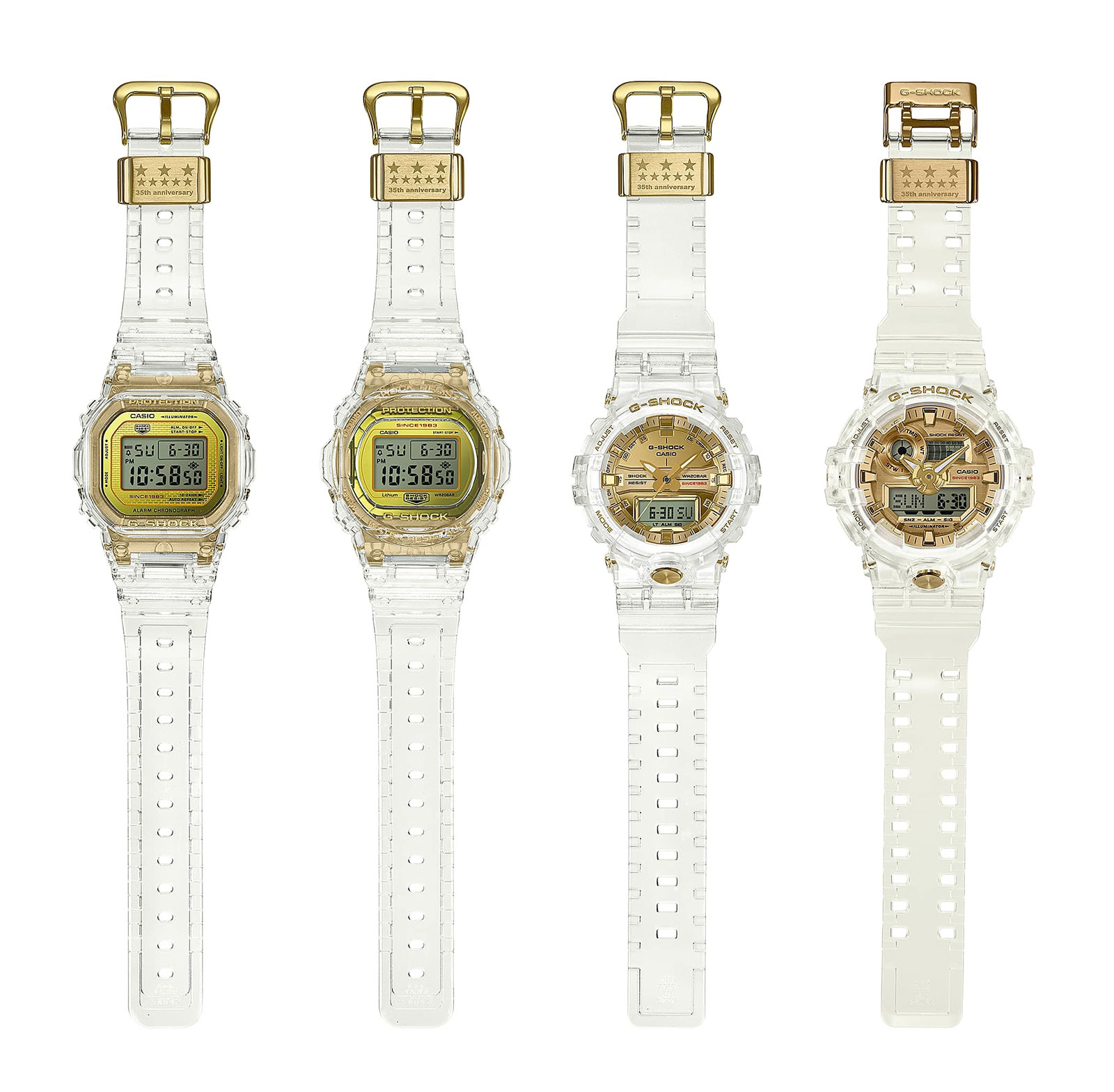Introducing the G-Shock Glacier Gold 35th Anniversary
The classics in translucent "jelly" and gold.
Casio has been rolling out commemorative editions over the course of the year, to mark the 35th anniversary of the G-Shock. The best known is of course the G-Shock ‘Full Metal’, a remake of the original 1983 model. Now that’s been joined by the G-Shock Glacier Gold, a quartet of translucent “jelly” models with bright gold accents that are variations of popular models in the current catalogue.
All four watches have gold-plated dials, screws, backs and buckles, along with matching translucent straps, as well as case back bearing the anniversary logo.
The first two are vintage remakes. One is the DW5035E-7, with its distinctive oblong case shaped like that of the original G-Shock DW5000 of 1983. And the other is the DW5735E-7, which is based on the DW5700 of 1987, one of the earliest round G-Shock watches.
Both of these have the same movement and are functionally identical, with functions including stopwatch, countdown timer and alarm. And they also have screw-down case backs, instead of a back secured by four screws.
The next pair is based on more recent designs. The GA-735E is oversized and 53.4mm in diameter, and based on the GA-710. It has both an analogue and digital display, along with the most electronic functions of the range, including a 31-time zone world time and 1/10th of a second countdown timer.
The smaller GA-835E is 48.6mm in diameter, with slightly fewer functions than its oversized cousin. It’s a variant of the GA-810.
Price and availability
The Glacier Gold series is already available in stores. In Japan all four share the same retail price of ¥24,300 including local taxes.
Overseas the retail prices differ between models: the DW5035E-7 and DW5735E-7 are priced at US$220 or S$339, while the GA-735E and GA-835E are US$190 or S$249.
Back to top.